Shortly after all eight episodes of the first season of Marvel’s 616 were released for streaming on Disney+ this past Friday, the internet couldn’t stop talking about the new documentary series that chronicles (some of!!) the history of Marvel Comics. What can you expect from the show’s first season? Eight documentaries that survey different perspectives of the Marvel Comics universe in a variety of different styles and tones.

Anthology of Interest
The best part of season one of Marvel’s 616 is the fact that it feels like the best Marvel comic anthologies, with a variety of different stories being presented under a single banner. It is clear that the director of each episode was given creative freedom to tell the type of story they wanted to tell.
This succeeds in multiple ways, delivering a season of documentaries that are each around an hour long, but which vary dramatically in terms of content, presentation, tone, and structure. There is a great sense of variety as you watch the season, with some episodes being more similar to “traditional” documentary fare, while others are more closely related to more personality-centered comedic docs.
Furthermore, you call tell that the directors are passionate about the subjects of their respective documentaries. Marvel has done an excellent job of casting actors who embody the vibe of the characters they are playing – think of how closely the public perception of Robert Downey, Jr. matched Tony Stark when he was cast in the role, or how Brie Larson embodies the steely confidence of Captain Marvel. With Marvel’s 616, the directors are responsible for episodes that match their natural interests, and that passion shows through on each of the varied documentaries.
Plus, part of what makes Marvel Comics so appealing is the broad spectrum of tones and perspectives that are all part of the same universe: a comedic, self-aware book like The Unbeatable Squirrel Girl belongs in the 616 just as completely as a serious political meditation like Black Panther: A Nation Under Our Feet. With episodes that range from the straightforward investigation of the history of the 1970s “Japanese Spider-Man” (Dir. David Gelb) to the playful and comedic antics of the Brute Force-centered “Lost and Found” (Dir. Paul Scheer), the season echoes the wide spectrum of comic storytelling styles that are incorporated into the panels of the 616.
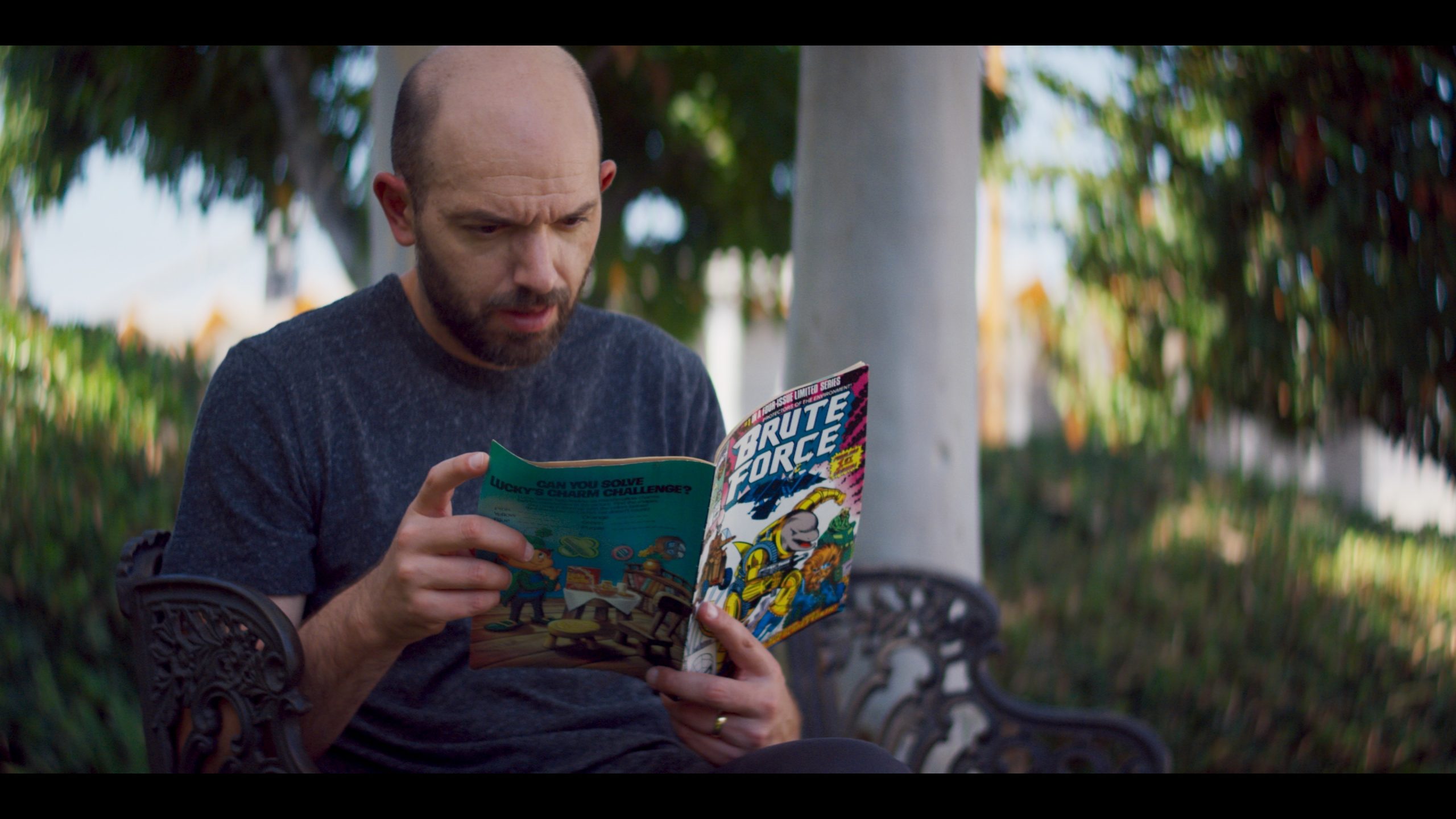
An Inside Job
When I reviewed the nonfiction book Betty and Veronica: The Leading Ladies of Riverdale by Tim Hanley, I noted that Hanley’s status as writer who was not beholden to Archie Comics allowed him to write about the history of the publisher with an objective perspective.
With Marvel’s 616, the opposite is true: while the season may be presented as eight documentaries, they are clearly produced by Marvel, and each one carries the intention to present Marvel in a positive light (yes, even episode 7).
There are decided benefits to behind-the-scenes documentaries produced in-house: for one thing, there is access to individuals, resources, and records that an outside party would never be able to approach (see also: Lucasfilm’s many excellent BTS documentaries). However, the flip side of in-house docs is that they run the risk of omitting important information because it does not fit the image the brand wishes to project.
Editing Out the Cigarettes
One aspect of the Disney philosophy that affects Marvel’s 616 is the propensity to sanitize its real-world hero figures. The efforts the international corporation has put into removing some of the questionable elements of founder Walt Disney’s personal history are well known (and extend to the digital removal of smoking cigarettes from Walt’s hands in photographs – even when doing so left an obvious, unnatural vacuum).
It seems unlikely that Disney is going to depart from this philosophy any time soon. In fact, the studio more or less codified the perspective in the 2013 movie Saving Mr. Banks, in which Tom Hanks plays a version of Walt who convinces Mary Poppins creator P.L. Travers (played by Emma Thompson) to cede rights for an adaptation by telling her that he will present the fictionalized version of her father as he should have been, not as he really was (the “saving Mr. Banks” that is referred to in the title).
This presentation of a sanitized historical figure is on display in full force throughout Marvel’s 616, thanks in large part to the presentation of the late Stan Lee. After appearing in on-screen cameo roles throughout the movies that comprised the first volume of the Marvel Cinematic Universe, Lee has become as familiar a character to MCU fans as Nick Fury or Maria Hill.
In part because of this pre-established familiarity, Marvel’s 616 never presents Lee as anything other than a benevolent patriarch. Questions regarding the dubious authorship of certain works attributed to Lee are never raised, and while Jack Kirby is mentioned (in venerated tones) several times over the course of Marvel’s 616’s first season, issues like Kirby’s departure from the publisher over proper crediting and creator’s rights in 1970 are never raised, much less examined.
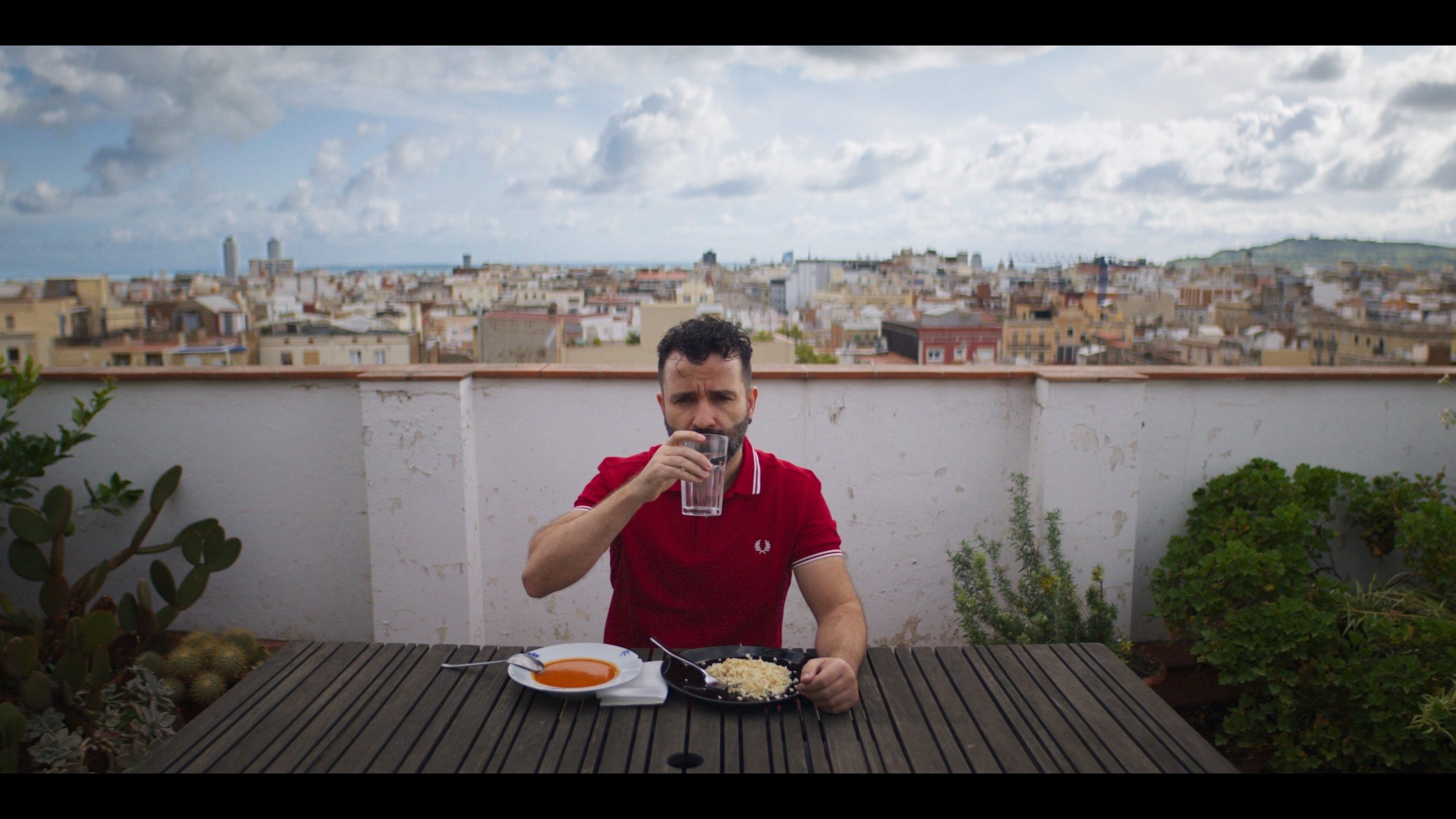
This philosophy of ignoring inconvenient parts of the Marvel story becomes especially jarring in the third episode, “Amazing Artisans” (Dir. Clay Jeter), a documentary that focuses on international Marvel artists Javier Garrón (Secret Warriors; Miles Morales: Spider-Man) and Natacha Bustos (Moon Girl and Devil Dinosaur).
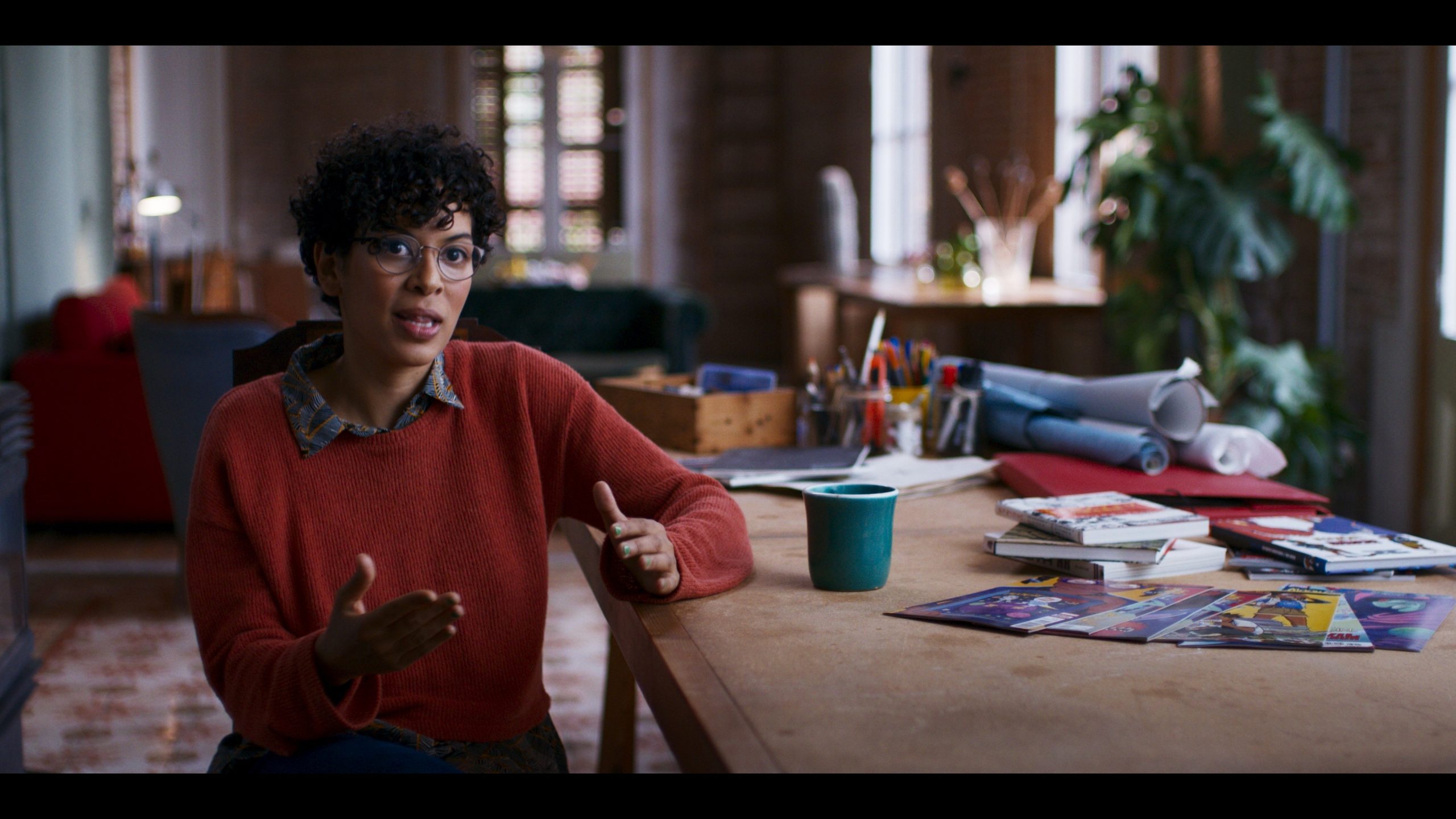
Overall, the episode is outstanding, and the interviews from Garrón and Bustos are especially enlightening (even making space for Bustos to acknowledge the integral effect of Tamra Bonvillain’s colors on the beautifully rendered Moon Girl comics). Supporting interviews from Marvel writers Saladin Ahmed, Amy Reeder, and Brandon Montclare, as well as with John Jennings (Professor of Media and Cultural Studies at UC Riverside; Kindred: A Graphic Novel), are also informative and appreciated.
However, an additional interview in the episode from Marvel Editor in Chief C.B. Cebulski seems incongruent. After explaining that Marvel had been founded by white men in New York City who were limited by the boundaries of their own experiences, Cebulski goes on to state, “This global creative culture that we live in has brought individuality, and uniqueness, and cultural authenticity to the way that we tell our stories graphically.” While the content of this statement is valid, it sticks out when the episode does not include any comment on the fact that Cebulski, who is white, infamously impersonated an Asian man while writing for Marvel in the mid-2000s.
If the inclusion of these quotes from Cebulski is meant to be an act of contrition for past mistakes, including an explicit statement to that effect is necessary in order for it to be received as such.
Instead, it comes across as a clumsy House of M-style attempt to re-write Marvel’s history – which seems somewhat ironic, considering how many of Marvel’s superheroes have personal flaws which they must recognize and then work to overcome in order to earn heroic status. Simply ignoring problems will not cause them to go away, and forgetting the missteps of the past is a great way to ensure they are repeated. Furthermore, while we can be inspired by a role model’s accomplishments, mistakes can be an invaluable teacher not just to the individual who is responsible, but for those who look up to them – a strong argument in favor of remembering not just our hero’s strengths, but their shortcomings, too.
Exceptional Episodes
Every episode of Marvel’s 616 is worth watching by Marvel fans (especially when they’re keeping in mind that these are documentaries made by Marvel to promote Marvel).
Several episodes feel more like celebrations of the community that has arisen around Marvel Comics rather than celebrations of Marvel Comics directly, and that works well. In “Unboxed” (Dir. Sarah Ramos) we get a glimpse of the role toys play in Marvel’s cultural impact, with interviews from designers and enthusiasts alike. Meanwhile, all of the subjects in “Suit Up!” (Dir. Andrew Rossi) are delightful, and the interviews with each of them deliver insight into what motivates them to craft and wear such impressive cosplays. These (and several other episodes) emphasize that the Marvel Comics community is a space that should be inclusive and welcoming, and investigate why so many diverse individuals have been able to see themselves within it.
My favorite episode of the season was “Higher, Further, Faster” (Dir. Gillian Jacobs), which explores the history of some of the women who have worked for Marvel Comics with some really stellar interviews, including Sana Amanat, Nilah Magruder, Louise Simonson, Shawna Kidman, Jo Duffy, June Brigman, Kelly Sue DeConnick, Ann Nocenti, G. Willow Wilson, and Trina Robbins. Furthermore, those who knew them personally remember late Marvel legends like Marie Severin and Flo Steinberg. And best of all, as the episode goes on, multiple interview subjects are brought together, giving viewers a glimpse of the personal dynamics between the creators (and reminding us of that bygone time when being in a room with several people was still safe). Plus, this episode even includes a shout out to an article written by The Beat’s own EiC Heidi MacDonald which broke the story that Magruder was the first Black woman to write a Marvel comic!
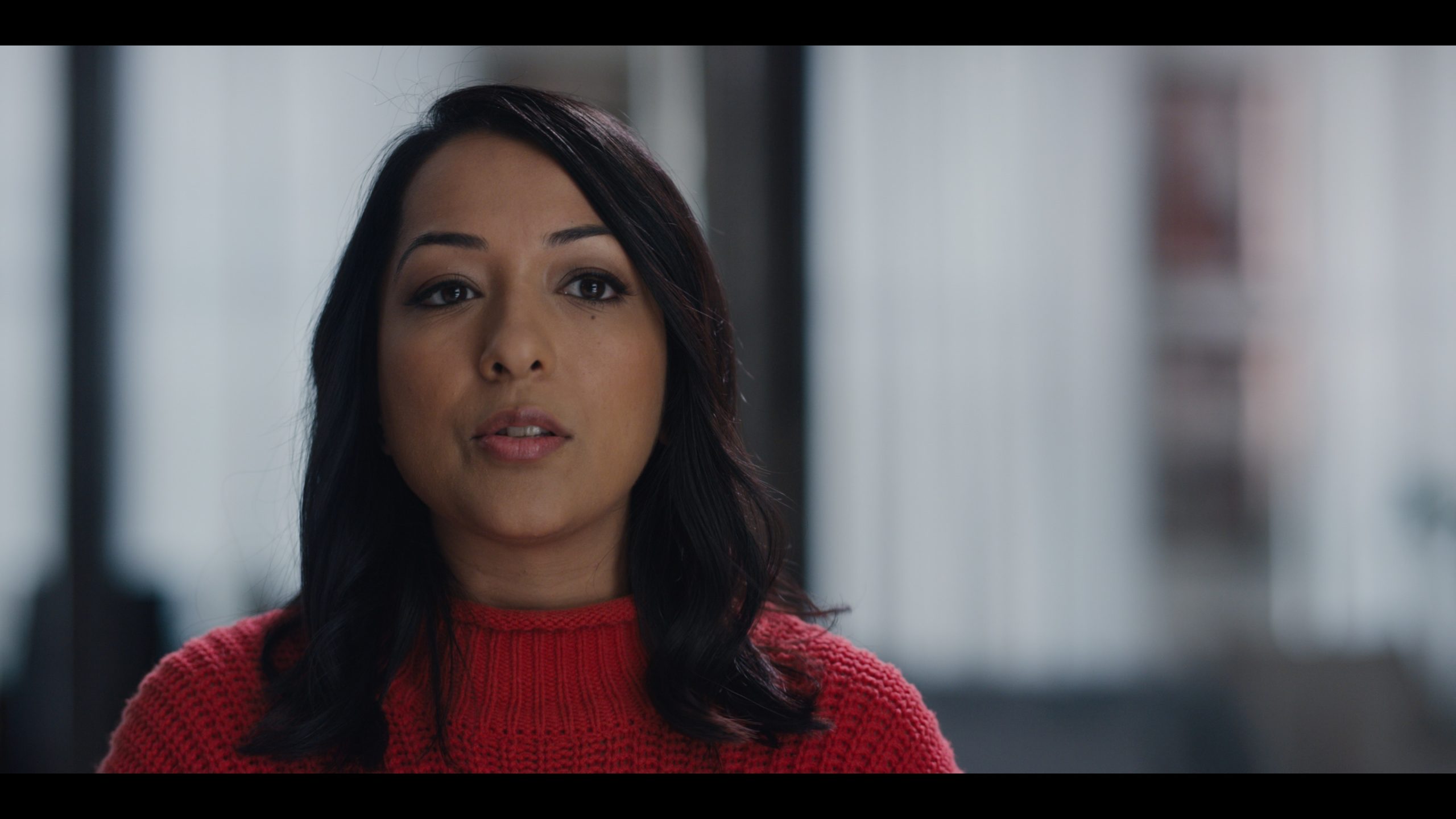
Under the direction of Jacobs, “Higher, Further, Faster” does an excellent job of presenting a cogent history that is filled with invaluable insights, and the interview subjects are perfectly chosen and open up wonderfully in their respective segments. Hopefully, we will see Jacobs direct more documentaries, whether in the second season of Marvel’s 616 or literally anywhere else.
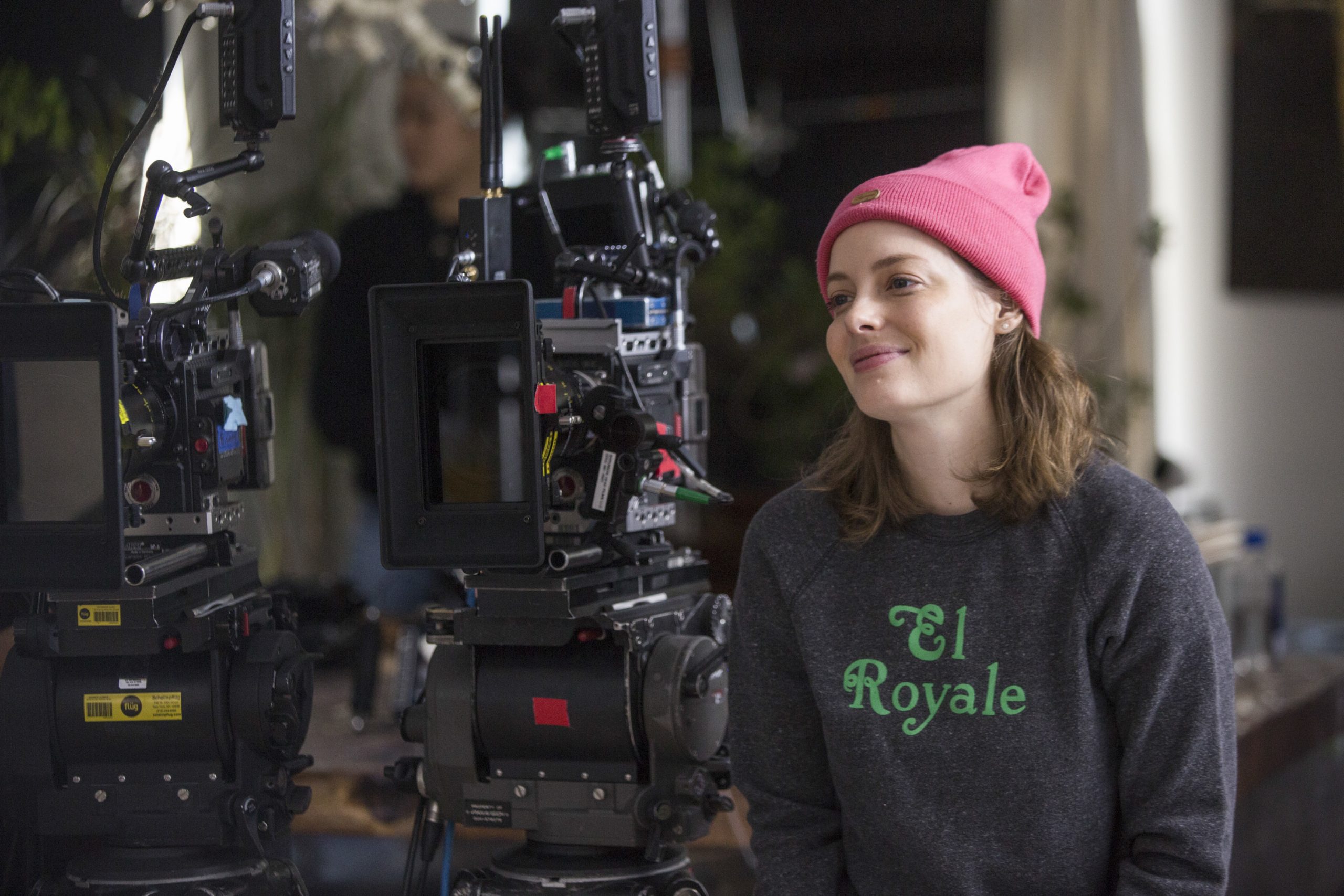
And incredibly, that isn’t even the only Community alum doing incredible directorial work in this season, with Alison Brie directing the season finale, “Marvel Spotlight.” The episode is a chronicle of high school students in Florida auditioning for, rehearsing, and performing in two of the plays in the Marvel Spotlight series, emphasizing the crucial role theater can occupy in the lives of certain teenagers.
The Marvel Method
However if you have heard anything about Marvel’s 616 so far, it is likely in reference to the penultimate episode of the season, “The Marvel Method” (Dir. Brian Oakes). Harkening back to the bygone era where Marvel Comics were created using the infamous methodology, the episode considers the creative process behind Iron Man 2020’s first issue, with writer Dan Slott’s battle with writer’s block centered as the subject of the episode.
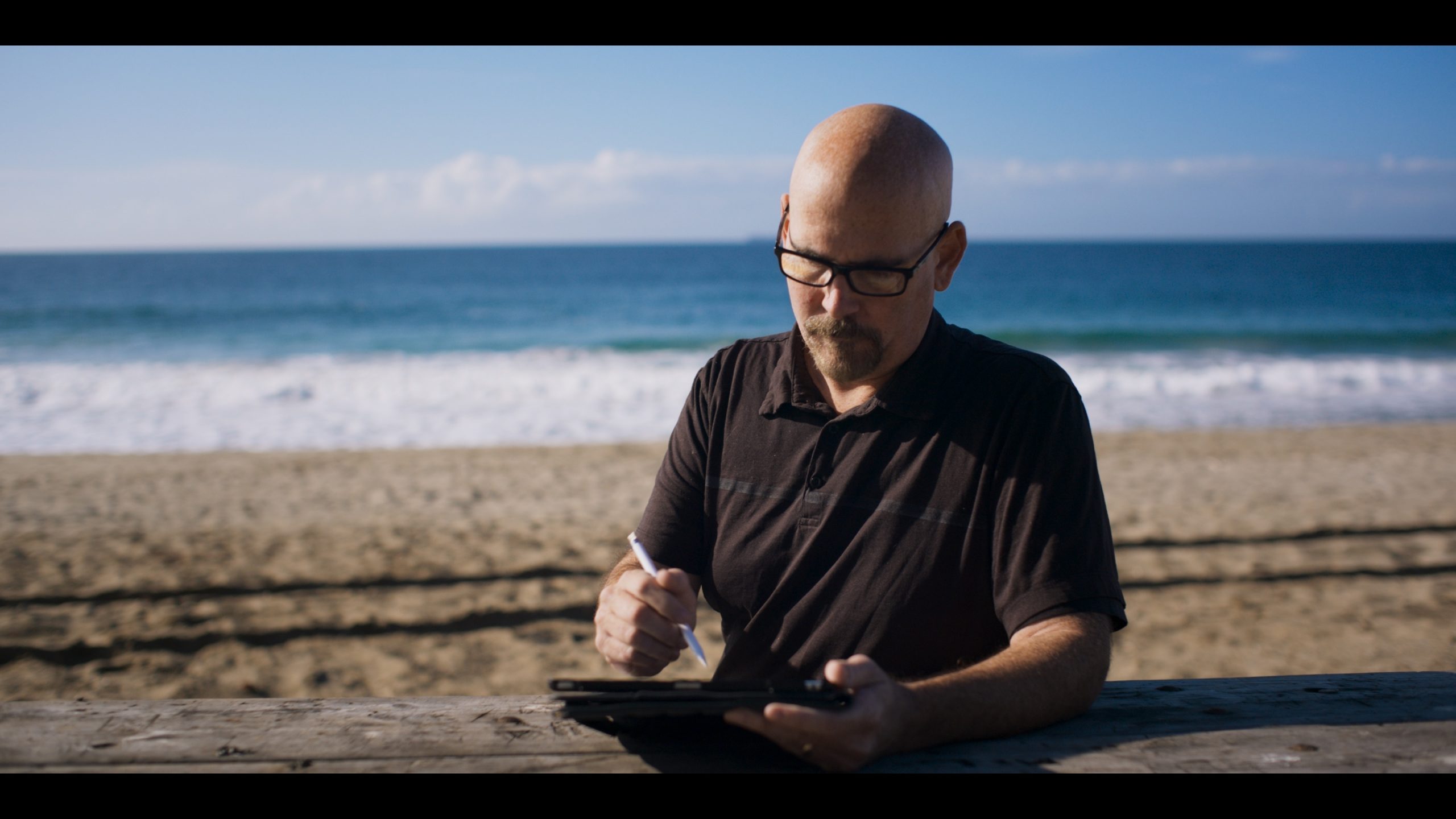
Over the course of the episode, which at times adopts an almost whimsical tone (conceptualizing Slott as a writer at a desk that floats in a void, or showing him “see” the Marvel heroes around our reality’s New York City), editor Tom Brevoort, artist Pete Woods, co-writer Christos N. Gage, and letterer Joe Caramagna appear in interviews to lament Slott’s aversion to deadlines. However, while many on Twitter seemed appalled at the eleventh hour delivery of the script for Iron Man 2020 #1, Caramagna himself Tweeted:
https://twitter.com/JoeCaramagna/status/1330518848227987460?s=20
Although this Tweet may not quell your anxiety over Slott’s tardy script (or the way artists and letterers in comics are treated generally), the other interview subjects featured in the episode have Tweeted similar statements, making it clear that the tone perceived by many viewers of the episode was indeed the one intended by director Oakes. Whatever your thoughts ultimately prove to be on this particular documentary, it certainly bears viewing, if only for the fact that it’s likely this depiction of Slott will be oft-referenced in conversation when we can all attend a comic convention once again.
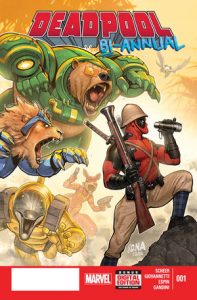
It is important to bear in mind throughout the season, however, that the stories that are being presented in Marvel’s 616 have been dramatized for entertainment purposes. For example, in the episode “Lost and Found,” Scheer “discovers” Brute Force in onscreen footage (which seems improbable, since he co-wrote Deadpool Bi-Annual #1 in 2014, which centers on Brute Force).
Marvel’s 616: Season Two?
“How can you relate to a story if you can’t see yourself in it?” says Nocenti near the end of the episode “Higher, Further, Faster.” Magruder elaborates on the point, calling for more depictions of disability, open queerness, and Asian and Latinx characters and creators in the future of Marvel Comics – and hopefully we’ll see more of these perspectives in the documentaries included in future seasons of Marvel’s 616, as well.
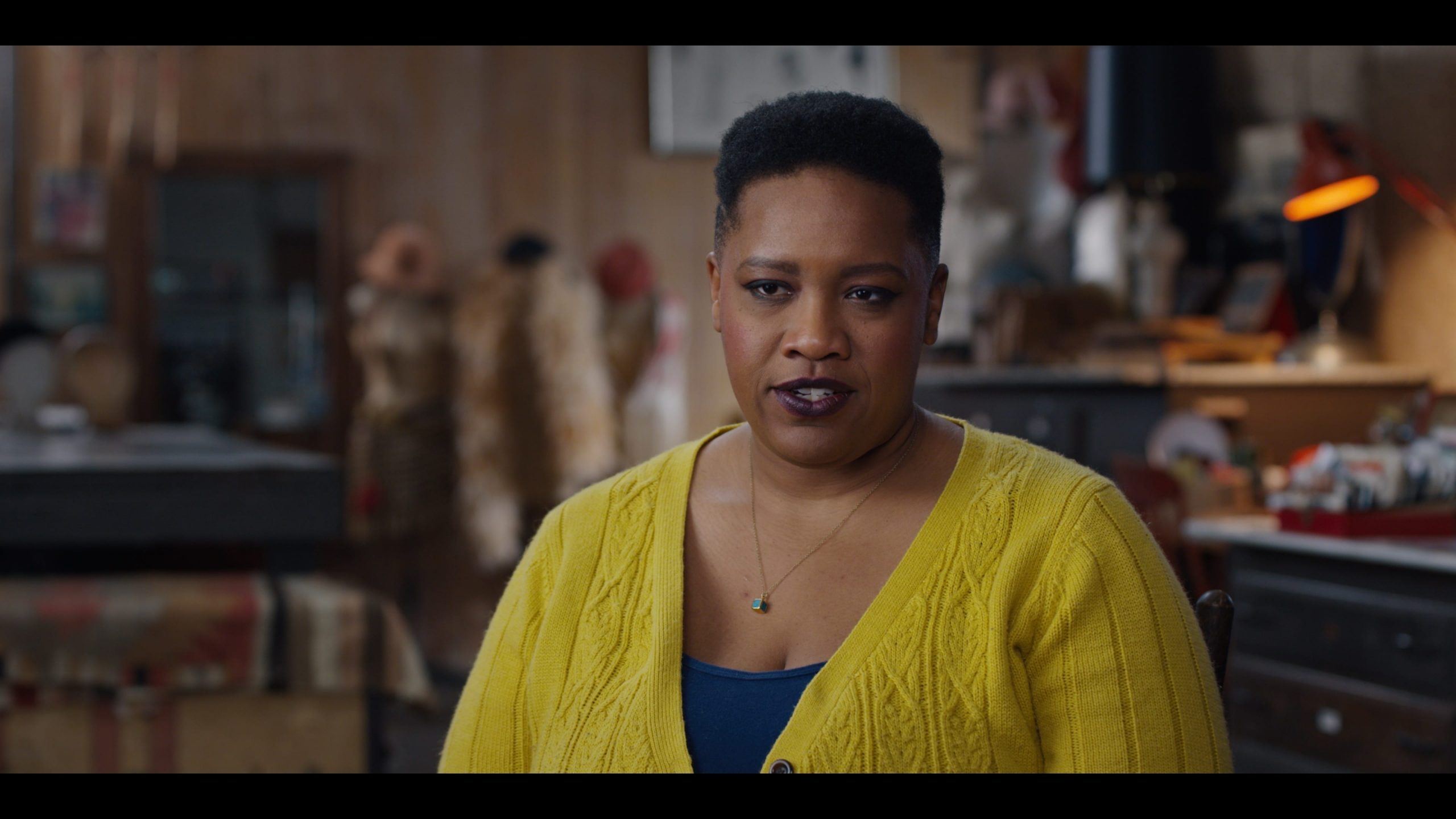
In particular, I’d love to see an episode about Vita Ayala‘s incredible work on Marvel Comics in a future season of Marvel’s 616. What was your favorite episode of the documentary anthology’s first season? Let The Beat know in the comment section!


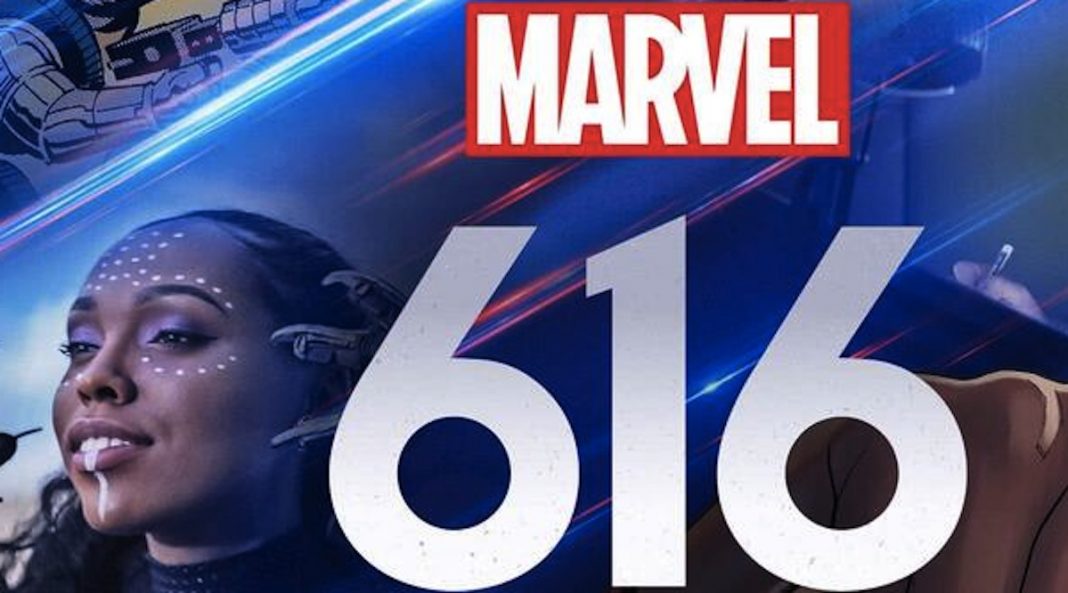
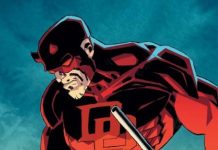
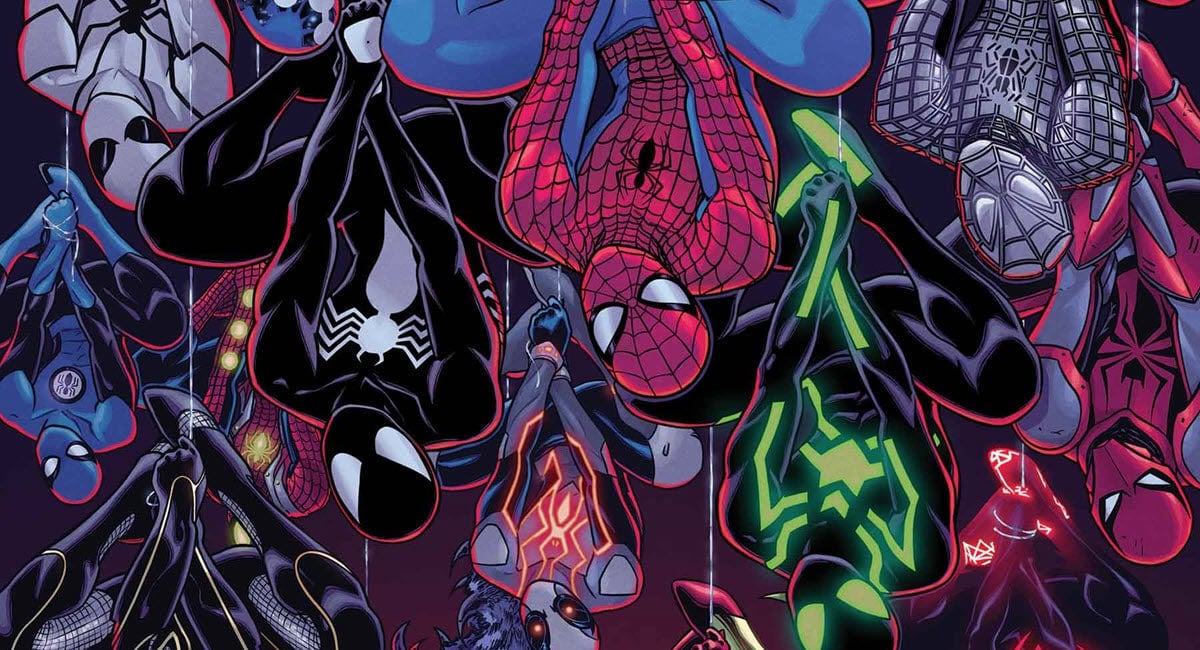




Editing out the cigarettes: I guess those ’60s caricatures of Lee and Kirby chomping on cigars wouldn’t pass muster today.
Disney also edited cigarettes from the hands/mouths of Harrison Ford and Carrie Fisher in a behind-the-scenes documentary about Star Wars.
Can’t wait til Disney gets its hands on James Bond, so we can have a Bond who doesn’t smoke, drink or have sex.
“After explaining that Marvel had been founded by white men in New York City who were limited by the boundaries of their own experiences …”
Most of those white men were Jewish, and grew up at a time when anti-Semitism was very common. They came from working-class backgrounds and were not privileged.
Bill said it before I did: CB’s comment is ridiculous, and completely waves away the diverse mutli-ethnic melting pot that was 1930s-1940s New York and dismisses it! All of these people were literally the children of first generation immigrants. Martin Goodman’s parents immigrated from Lithuania. There’s also a difference between a WASP and a Jew, especially back then! What a completely ignorant remark, meant to display some kind of awareness. Martin Goodman travelled as a hobo around the country and experienced the Depression first hand. So many early Timely-Atlas workers (who ranged from the African-American Ray Holloway to the Japanese Morrie Kuramoto were the non-exceptions to Jewish executives and Jewish creators. There’s a reason Jacob Kutzenberg became Jack Kirby and Eli Katz became Gil Kane and it’s a shame more supposed comic experts don’t consider that context.
Granted, Jews in New York didn’t have it as bad as African Americans and members of other races had it pretty much everywhere in the ’30s and ’40s (and for decades after that). But they faced their share of prejudice. As Heath said, most of the early comics creators were the children of immigrants and grew up in poverty-stricken tenements.
One reason why so many ethnic minorities went into comic books is that they weren’t wanted anywhere else. The Saturday Evening Post wasn’t about to look at Jack Kirby’s or Will Eisner’s portfolios. But they could get a job in comic books.
Jews, Italian Americans and other widely despised groups created their own industry, much as they had in Hollywood. The reason why Jewish executives dominated movies wasn’t because of some sinister conspiracy; it was because most WASPs regarded movies as lowlife and didn’t want anything to do with them. The same thing happened with comic books in the late ’30s.
Granted, Jews in New York didn’t have it as bad as African Americans and members of other races had it pretty much everywhere in the ’30s and ’40s (and for decades after that). But they faced their share of prejudice. As Heath said, most of the early comics creators were the children of immigrants and grew up in poverty-stricken tenements.
The 30s were the Great Depression.
Everyone had it bad but they DEFI ITELY had it better than Malcolm X, whose father was murdered by the KKK and his family was so destitute his mother would boil dandelion greens for dinner sometimes.
Also pretty tired of seeing right-wingers try to white supremacist signal each other by whining about the “unfair” treatment of white dudes.
You sound like Stormfront talking to Homelanders son in the last ep of The Boys.
“Also pretty tired of seeing right-wingers try to white supremacist signal each other by whining about the “unfair” treatment of white dudes.”
Hope you’re not talking about me, “John Brown,” because I voted twice for Obama and twice against Trump. I’ve debated many right-wing comic book guys who love Trump.
As I said, Jews in New York didn’t have it as bad as African Americans. But their lives weren’t picnics, either. Jews outside of New York faced the sort of bigotry you probably can’t imagine. Read up on the Leo Frank case in Georgia.
The people who scream “racism” the loudest these days almost inevitably grew up in comfortable middle-class suburbs and went to expensive colleges. The more privileged a person is, the more likely he or she is to see “white supremacy” everywhere.
“The 30s were the Great Depression. Everyone had it bad …”
Not really. Rich people, like the Bush and Kennedy families, stayed rich in the ’30s and barely noticed the Depression. There were wealthy people like that in every city.
Am I a white male? And now I’m a White Supremacist to boot! Considering your cultural education only spans to comic book adaptions, I won’t let your completely off projection annoy me. I just happen to be against the dismissal of Jewish Americans as well. Of course Malcolm X had it worse- but we weren’t talking about that.
Bill, John Brown is clearly a troll. Did he read the Autobiography of Malcolm X with Alex Haley? Does he not realize that we know the 1930s’ were the Great Depression? The fact that he doesn’t grasp the context of referencing the thirties- when, ahem, Marvel was started (they were publishing Pulps with Ka-Zar in them years before 1939)- says much. I guess being a woman with biracial children makes me a right-winger. If you’re tired of seeing right wingers and white supremacists- and believe me, I am too- then don’t reference Amazon adaption of super-hero comics on message boards: go get involved with BLM, donate to ActBlue, go and march. But also know your history.
(Heath is for HEATHER)
Calling Marvel 616 a documentary series is more than a stretch, it’s Disney’s PR machine in full force.
Heather, I assumed “John Brown” is probably a teenager or a frat boy with very little knowledge of history. At least that’s how he comes across.
Comments are closed.